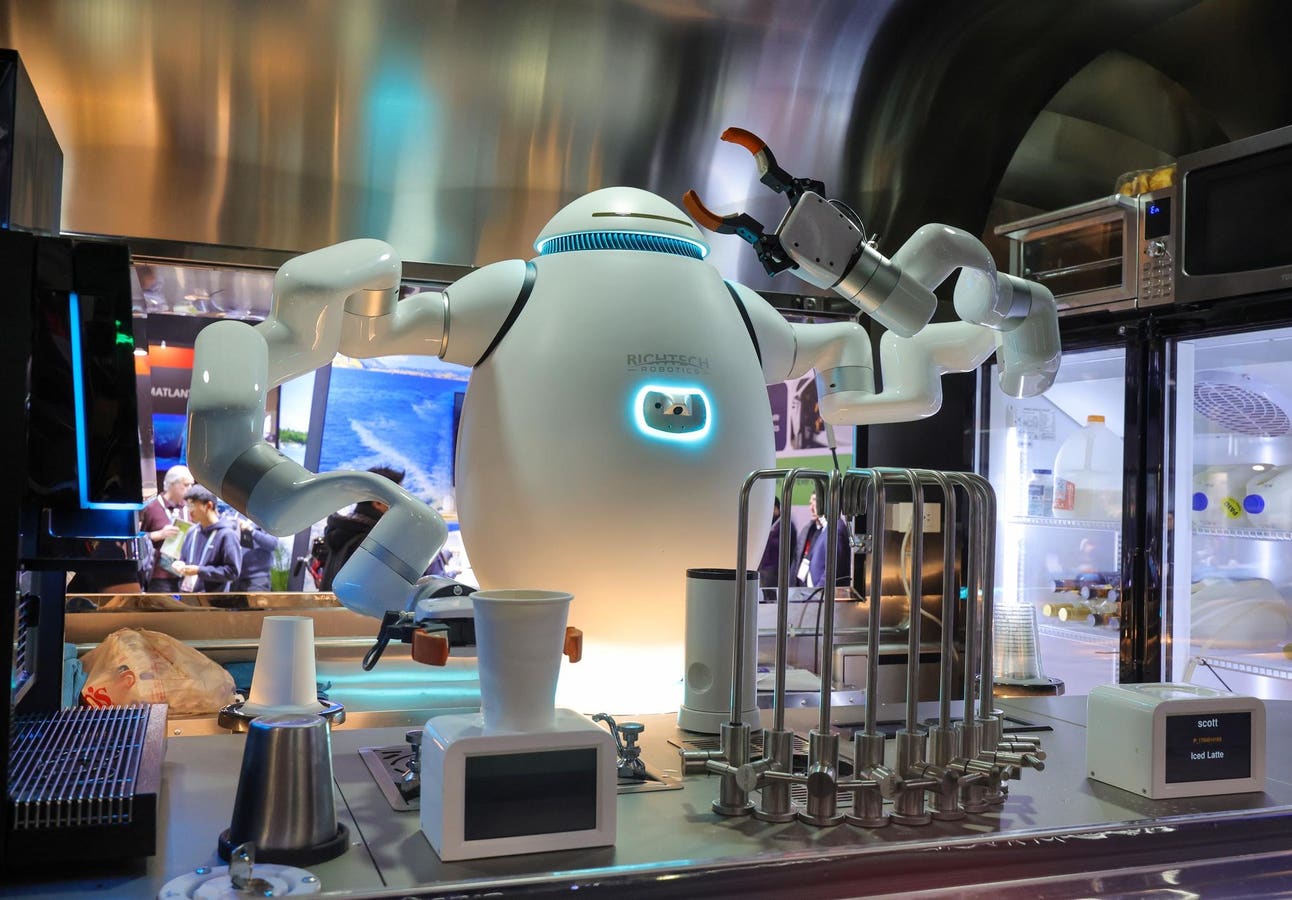A forecast by restaurant consultancy Aaron Allen & Associates suggests that as much as 82% of restaurant roles could potentially be supplanted by robots, with up to 31% of those roles being devoted to food preparation. This shift towards automation could yield substantial savings for U.S. fast-food establishments, estimated to exceed $12 billion annually, as projected by the group.
Restaurants are increasingly incorporating robot chefs into their culinary operations for several reasons. Firstly, robots provide a compelling solution for a sector that is consistently short on workers. At least 60% of dining establishments say that they have been struggling to recruit employees. According to Aaron Allen & Associates, in the United States alone, there was a shortage of 300,000 restaurant workers in 2022.
Robot chefs offer consistency and precision in food preparation, ensuring that each dish adheres to exacting standards every time it’s prepared. This consistency enhances the dining experience and builds customer trust. Additionally, robot chefs can work tirelessly without fatigue or error, increasing efficiency and reducing labor costs for restaurant owners. With the ability to produce meals quickly and accurately, restaurants can serve more customers during peak hours, ultimately boosting revenue. Moreover, in an era where hygiene and sanitation are paramount concerns, robot chefs provide a hygienic alternative to human chefs, minimizing the risk of food contamination and ensuring a safer dining environment.
In addition to many practical benefits, from a PR perspective, the novelty and futuristic appeal of robot chefs can attract curious customers, generating buzz and publicity for a restaurant.
Here are five global restaurants employing robot chefs.
California: CaliExpress by Flippy
Newly-opened CaliExpress by Flippy is a fully autonomous restaurant based in Pasadena, California.
Harnessing cutting-edge food technology, CaliExpress boasts grill and fry stations that function autonomously, propelled by state-of-the-art artificial intelligence and robotics. Flippy, by Miso Robotics, orchestrates the preparation of burgers and cheeseburgers, featuring a unique blend of wagyu beef freshly ground by the grill robot upon each order. Presently, the restaurant exclusively offers hamburgers, cheeseburgers, and fries, all tailored to customers’ preferences and conveniently ordered and paid for via designated kiosks.
Croatia: BOTS&POTS Sci-Food bistro
At BOTS&POTS Sci-Food bistro, autonomous robotic cookers create one-pot wonders with unparalleled precision— with no direct human intervention. Think of GammaChef, a human-trained robotic chef, as the head chef. With a blend of artistry and algorithmic prowess, GammaChef meticulously prepares meals, from the subtle drizzle of oil to the precise seasoning of each dish, all according to human crafted digital recipes. Elsewhere in the kitchen, robotic cookers conjure up four mouthwatering meals every 15 minutes, effortlessly delivering nearly a hundred servings per hour. At present, the restaurant offers an assortment of dishes including chili con carne tortillas, a rotating seasonal salad, Thai red curry, shrimp and zucchini pasta, chicken and truffle gnocchi, alongside various other options.
Japan: E Vino Spaghetti
Tokyo’s E Vino Spaghetti is home to the world’s pioneering automated pasta chef, P-Robo, jointly developed by Japanese café operator Pronto Corporation and Tokyo-based robotics firm, TechMagic. Harnessing the power of AI-based image recognition technology, P-Robo can prepare pasta dishes in a mere 45 seconds, utilizing a specially crafted frying pan with high-powered induction. After boiling pre-cooked noodles, P-Robo orchestrates the addition of sauce and seasoning in the frying pan, ensuring even coating through a precise spinning motion. With kitchen staff adding the finishing touches, the entire cooking process takes 45 to 75 seconds. Capable of churning out an impressive 90 meals per hour, P-Robo also handles tasks like defrosting frozen pasta and self-cleaning pans.
United States: Sweetgreen
Salad chain, Sweetgreen, is utilizing robotic salad-making chefs within its automated Infinite Kitchen, hailed as one of Time Magazine’s top inventions of 2023. While human employees handle crucial tasks such as marinating proteins, cooking and chopping vegetables, and crafting dressings, it’s the Infinite Kitchen that does the heavy lifting. The robot dispenses salad ingredients, shooting perfect portions from tubes into bowls gracefully gliding down a conveyor belt. By leveraging this automated system, the fast-casual chain is not only enhancing efficiency but also reducing wait times significantly, with the capacity to assemble an impressive 500 salads and bowls per hour.
Global: RoboChef
RoboChef is an AI-enabled cloud-based robotic chef quick service restaurant… with global franchise opportunities. The concept is currently operating successfully in Dubai and Singapore.
At RoboChef, patrons curate their orders, selecting from a diverse array of ingredients, which are then meticulously prepared by an agent and inserted into one of the robotic chefs for cooking and seasoning. The robotic chef has a database of culinary creations which can be adapted and personalized. Artificial Intelligence significantly influences the culinary process by ensuring precise cooking times, controlling temperatures, selecting ingredients, and seasoning dishes with programmed precision. Within 2 to 3 minutes, the dish is ready for consumption.
As the culinary world continues to evolve, the integration of robot chefs in global restaurants marks a significant stride towards innovation and efficiency. From the precision of ingredient selection to the mastery of cooking techniques, robotic chefs are reshaping traditional dining experiences. As we witness the seamless fusion of technology and gastronomy, it becomes evident that the future of food lies not just in taste, but in the ingenuity of its creation. As these five global restaurants demonstrate, embracing automation could enhance the quality and consistency of dishes while also opening doors to culinary exploration. But the question still remains— can a robot ever replicate the beauty of human artistry and creativity?
Read the full article here





